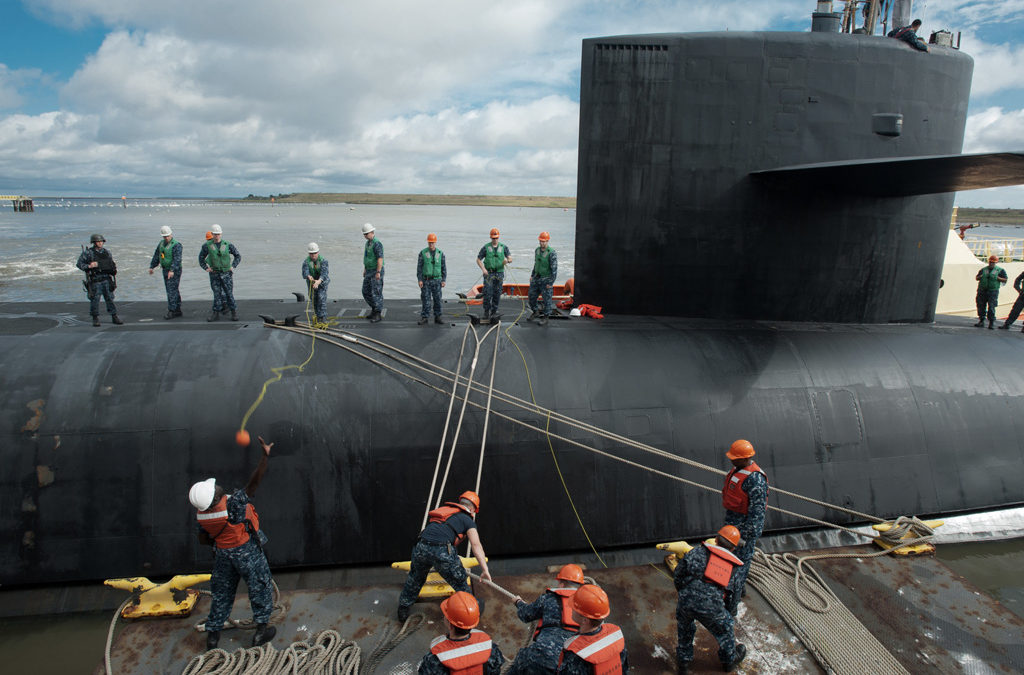Kelsey Davenport
President Obama has declared that the United States is committed to creating “the peace and security of a world without nuclear weapons,” but the policy debate in Washington often lags far behind this lofty vision. Some progress has been achieved in negotiated arms reduction, but many in Washington cling to old ways of thinking.
In February the New Strategic Arms Reduction Treaty, or New START, entered into force. This was a real victory for nuclear disarmament. Under the terms of the treaty, the United States and Russia are obligated to reduce their strategically deployed nuclear warheads to 1,550. They will cut deployed delivery vehicles—intercontinental ballistic missiles, submarine-launched ballistic missiles, and nuclear-capable bombers—to 700 over the next 7 years.
These developments will mean a 30 percent reduction in deployed warheads, a 50 percent cut in delivery launchers, and new verification measures to ensure that reductions are being implemented.
TENS OF BILLIONS OF DOLLARS
But the cost of achieving these modest reductions was high. To secure the Senate votes needed for ratification, President Obama made a commitment to “modernize” the nuclear weapons complex. He pledged to spend tens of billions of additional dollars to upgrade nuclear production facilities.
Meanwhile the Pentagon is moving forward with plans to purchase new strategic nuclear delivery systems. This effort is proceeding despite the nuclear reductions that are mandated in the New START agreement and in the face of imminent cuts to the Department of Defense budget.
The Pentagon’s planned expenditures on nuclear bombers and submarines are unaffordable, unnecessary, and at odds with the reductions in the new treaty.
In the next decades the Pentagon is planning to spend more than $400 billion on new fleets of nuclear bombers and submarines, even though these systems are not needed because the overall force will be smaller. These planned expenditures are unaffordable, unnecessary, and at odds with the reductions that are part of the new treaty.
Pentagon officials acknowledge that funds may not be available for upgrading and maintaining nuclear weapons systems. In July General James Cartwright, outgoing vice chairman of the Joint Chiefs of Staff, said, “we don’t have the money to do it.” Air Force General Robert Kehler, commander of U.S. Strategic Command, which manages U.S. nuclear forces, stated that “we’re not going to be able to go forward with weapon systems” at present costs.
The Navy is planning to build 12 new ballistic missile submarines, at an estimated cost of almost $350 billion, despite the fact that it is reducing the number of submarine-based warheads by half.
This is obvious from a look at the costs of maintaining the current ballistic missile submarine fleet. Currently the fleet comprises 12 deployed submarines, which when fully loaded carry more than 2,000 nuclear warheads.
The current submarines are scheduled for retirement over the next 30 years, so the Navy is planning to build 12 new ballistic missile submarines, at an estimated cost of almost $350 billion, despite the fact that it is reducing the number of submarine-based warheads by half. Tens of billions could be saved by cutting the submarine production program.
The Navy is not the only branch of the military with expensive plans for new nuclear capable delivery vehicles. The U.S. Air Force is planning a new Long Range Penetrating Bomber at a price tag of $40-60 billion for a fleet of 80-100 planes, even though expensive upgrade programs are already underway on existing bombers.
Under the New START agreement, the Air Force intends to field only 60 nuclear capable bombers, which it can easily do with the existing fleet. A new nuclear bomber program is completely unnecessary.
RELICS OF COLD WAR THINKING
The idea that the U.S. needs a huge arsenal of nuclear weapons is a relic of Cold War thinking. It is contrary to the U.S. commitment to disarmament and is irresponsible financially in light of the government’s current fiscal crisis.
Reducing the ballistic missile submarine fleet and canceling the new bomber program will help the United States meet its arms reduction commitments and will save tens of billions of tax dollars over the next decade.
Kelsey Davenport is a Scoville Peace Fellow at the Arms Control Association in Washington, D.C. She is completing her master’s degree in international peace studies at the University of Notre Dame’s Kroc Institute.




